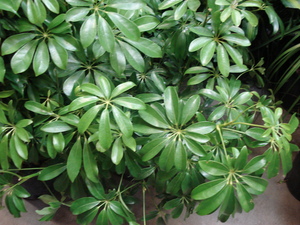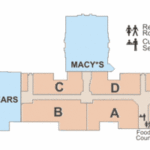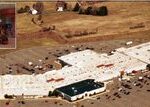Indoor plants are wonderful to have around. Whether we have them inside our homes, our places of work, at the mall and other public buildings, indoor plants help us stay in touch with nature, as if bringing the outside in. In most homes and offices, having indoor plants balances the atmosphere, with plants excreting oxygen improving air quality.
So how does one care for indoor plants?
CHOOSE THE CORRECT INDOOR CONTAINERS:
Choosing the right containers for your indoor plants is important in caring for your plants. There are many types of containers that can be used for growing plants. Most pots with bottom drainage holes are made of plastic, ceramic or clay, whereas decorative containers without drainage holes may be made of clay, ceramic, plastic, wood, copper, brass and various other materials. Choose the correct size for your indoor plants. If you choose a pot that is too small or too large, it will not look balanced. Think of the growth of the plant when choosing pots; make sure there is enough room for soil and roots.
There are two methods for potting indoor plants: (1) planting directly in the container and (2) placing a potted plant in another, more decorative container also known as “double-potting. When plants are potted directly in the container, the container should have a drainage hole and a tray to catch the excess water. If the pot does not have a drainage hole, put small rocks or gravel in the bottom to allow for water to drain. If you are “double-potting” the pot on the inside or the smaller pot should have drainage holes, the outside or bigger pot does not have to have drainage holes. Just make sure to add a layer of gravel before putting the smaller pot inside of the bigger pot if the bigger pot does not have drainage holes. Be sure to place a tray beneath the pot to catch the excess water when using pots with drainage holes. Never place pots directly in contact with the carpet, floor or furniture as moisture can damage them.
As for the materials used to make pots, generally, clay pots are porous and allow air movement through the sides of the pot. This allows the soil to dry and oxygen to reach the roots. Other pots not made of clay are nonporous that can prevent water from evaporating through the sides, thus, plants require less frequent watering than those in clay pots.
FERTILIZING:
Indoor plants, like outdoor plants, also require certain essential elements for proper growth. Indoor plants, in low light conditions of the interior environment, have reduced fertilizer requirements. Observing indoor plants as they grow will guide you in determining a plant’s fertilizer needs. As a rule of thumb, fertilizing should be more frequent when the plants are in their growth stages. This is during the spring and summer when sunlight is stronger and the days are warmer and longer. During the plants “resting stage” which is during the winter season, days are shorter and plants receive little or no light, in this case, do not give them fertilizers.
How often you would apply fertilizers would vary with the growth phase and age of each plant. Apply fertilizers more frequently when the plants are growing. Read the instructions on the label of the fertilizer product you are using. Follow instructions on how often or how diluted your fertilizer should be. Fertilize every two or three months, or dilute the fertilizer to about one-tenth the recommended rate and use this solution at every watering during the growing season. You can also fertilize every seventh watering so as not forget when you need to do it.
Some labels would show the ratios representing the percentages by weight of Nitrogen, Phosphorus, and Potassium in the fertilizer. Having all three is important and excellent choice of fertilizer for the health of your indoor plants. Choose a balanced fertilizer for foliage plants, such as 20-20-20, and one that is higher in phosphorous for flowering plants, such as 15-30-15. Some fertilizers for indoor plants come in liquid form, water-soluble granules and slow-release forms (granules, stick or tablets). Whatever you choose to use, make sure not to over fertilize. You can detect over fertilization if the soil has a white film on the surface or if the pots have white crusts on the rim or drainage hole. The same symptoms may also indicate over watering. Salt buildup in the soil can lead to root damage which can cause the plant to die. To prevent salt build up, water correctly by watering the soil thoroughly and allow excess water to flow out of the drainage holes.
LIGHT SOURCE AND REQUIREMENTS:
Light is very important in providing energy source needed for plants to manufacture food. The amount of light is commonly measured in foot-candles (ft-c). The interior of a well-lighted home is often less than 100 ft-c, while outdoor light intensity on a clear sunny day may exceed 10,000 ft-c. When you buy plants, look at the labels as to their lighting needs. Plants differ greatly in their light intensity requirements (see table). Indoor plants are often classified by the amount of light necessary for growth:
Low (minimum 100 ft-c, 75 to 200 preferred for good growth)
Medium (minimum 100 to 150 ft-c, 200 to 500 preferred)
High (minimum 150 to 1000 ft-c, 500 to 1000 preferred)
Very high (minimum 1000 ft-c, 1000+ preferred)
You would need about100 ft-c for 12 hours per day to maintain plant quality for one year, and at least 200 ft-c for 12 hours per day for foliage plants to manifest any benefit from fertilization.
If your home as a sunroom or green house you should have sufficient light levels to grow plants that require very high light, for example geranium, hibiscus, English ivy, wax begonia, etc. Medium light plants like the African violet and Boston fern do well if placed within several feet of these light sources or in eastern exposures. Low light plants, like the peace-lily, can be placed several feet away from eastern exposures or in northern exposures. The amount of light at any given location will vary according to time of year, the angle of the sun, the length of day, shading, window curtains and wall color (light reflection), as well as the location itself.
In some homes where there are not enough sun exposure or natural light, use of artificial lighting is very common to supplement or replace natural light. Many indoor plants grow well under artificial light provided by fluorescent lamps or special incandescent lights.
Make sure to use enough light, too much or too less can be harmful to plants. For example, shade plants cannot tolerate excessively high light levels. When a plant receives too much direct light the leaves may burn and wither. This often happens after moving a plant outdoors in direct light. Make sure that light changes are gradual when moving indoor plants around.
CLEANING
Since indoor plants may collect dust or greasy films that can dull their appearance, it is important to clean them. Reasons being, clean leaves are favorable to healthy growth and second, cleaning helps control insects and enhances the plants’ appearance. Avoid products that clean and shine leaves for they can leave waxy coating residue that may interfere with air exchange. Never use these products on plants that have hairy leaves, such as African violets. These types of plants should be dusted by using cosmetic brush or cosmetic sprayer. For the leaves that are not hairy, the best way to clean them is to dampen a soft cloth with water and wipe the lower and upper surfaces of each leaf. An alternative is to place the entire plant outdoors or in the shower to rinse it off.
Hopefully these tips can help you grow your indoor plants and enjoy them for years to come.
Reference:
- Sloate’s Plants and Garden






